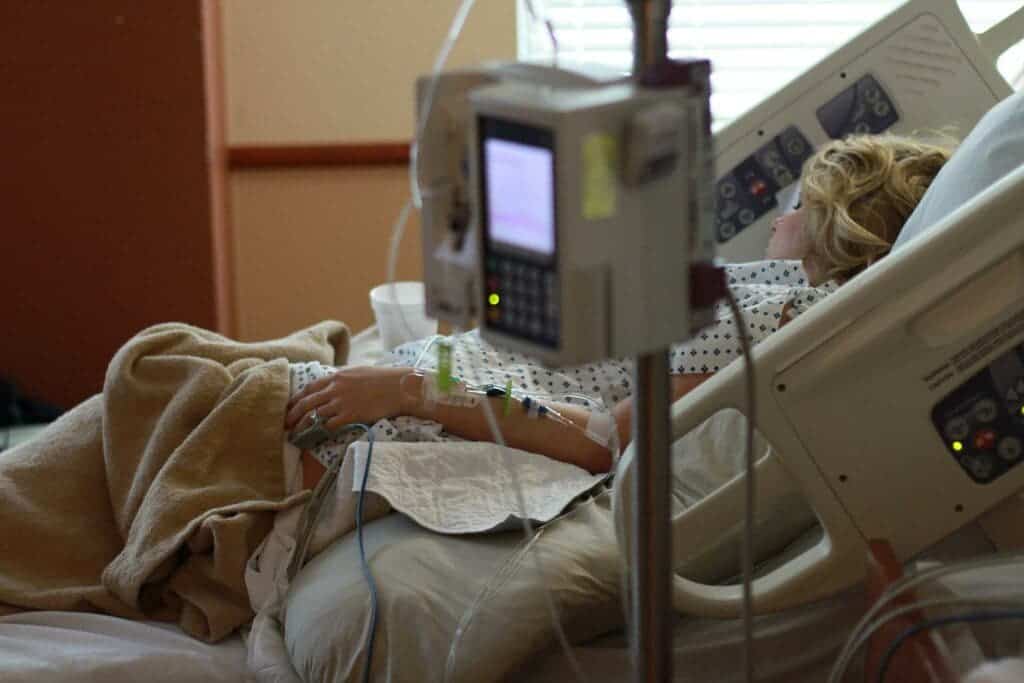
AI is touted as disruptive and transformative for a wide range of industries, but there’s perhaps no other field where it provides more value than healthcare. After all, what’s more valuable than a person’s life? Machine learning programs are now being used in many hospitals to spot cancer and other diseases and discover new drugs, but there’s still this general impression that this is all done at a small scale and the impacts are still minimal. The reality couldn’t be further from the truth. AI is already here to stay and it has already saved thousands of lives. Not tomorrow or at some distant point in the future. Now.
Researchers at Johns Hopkins University published two studies this week describing a machine learning-based early detection tool for sepsis that was deployed at five hospitals over a two-year period. During this time period, the AI was able to identify nearly 10,000 sepsis cases from patient records and helped doctors deliver critical care about two hours, on average, earlier than when they didn’t have access to the AI’s alert.
Thanks to this system, the patients were 20% less likely to die of sepsis, potentially saving thousands of lives across the U.S. if it is implemented nationwide. About 1.7 million American adults develop sepsis, and more than a quarter million die because of it.
“It is the first instance where AI is implemented at the bedside, used by thousands of providers, and where we’re seeing lives saved,” says Suchi Saria, founding research director of the Malone Center for Engineering in Healthcare at Johns Hopkins University, and lead author of the studies.
“This is an extraordinary leap that will save thousands of sepsis patients annually. And the approach is now being applied to improve outcomes in other important problem areas beyond sepsis.”
Sepsis happens when the immune system overreacts to an infection, causing damage to the body’s own tissues and organs. This out-of-control reaction can be very violent, triggering widespread inflammation in the body that is often life-threatening. The vast majority of sepsis cases are bacterial in origin, but other types of infections — including COVID-19, influenza, and fungal infections — are also known to cause sepsis.
Once sepsis sets in, the patient usually suffers fever, a rapid heart rate, and difficulty breathing. When treating sepsis, time is of the essence. Even a single hour of delay in proper treatment can be the difference between life and death.
However, sepsis is not always obvious, so there is naturally some delay in diagnosis and its symptoms can even be confused with those of other less serious infections. But if the condition is not diagnosed in time, it can progress into septic shock, causing a significant drop in blood pressure, organ failure, and widespread tissue damage. Even with treatment, in some cases, there is nothing doctors can do to save the patient’s life, which is why prevention is the name of the game with sepsis. During standard care, 30% of patients with sepsis die. Among them was Saria’s nephew.
“Sepsis develops very quickly and this is what happened in my nephew’s case,” she says. “When doctors detected it, he was already in septic shock.”
This is why the AI developed at Johns Hopkins, known as the Targeted Real-time Early Warning System, is so important. In the two years the system had been online since 2018, during which it monitored over 590,000 patients via their electronic health records, the AI was able to flag nearly 10,000 cases of sepsis. Its accuracy following diagnosis proved to be 38%, which might not sound like a lot, but earlier systems couldn’t achieve more than 12%.
More than 4,000 doctors used the AI for sepsis detection, which allowed them to detect the infection an average of nearly six hours earlier than traditional methods.
“This is a breakthrough in many ways,” says coauthor Albert Wu, an internist and director of the Johns Hopkins Center for Health Services and Outcomes Research. “Up to this point, most of these types of systems have guessed wrong much more often than they get it right. Those false alarms undermine confidence.”
This work showcases the power of AI in a healthcare setting to save lives — and this is just the beginning. Researchers at Johns Hopkins have already adapted the system to provide early warnings for patients at risk of bed sores, sudden deterioration caused by bleeding, acute respiratory failure, and cardiac arrest.
The findings appeared in the journals Nature Medicine and Nature Digital Medicine.


